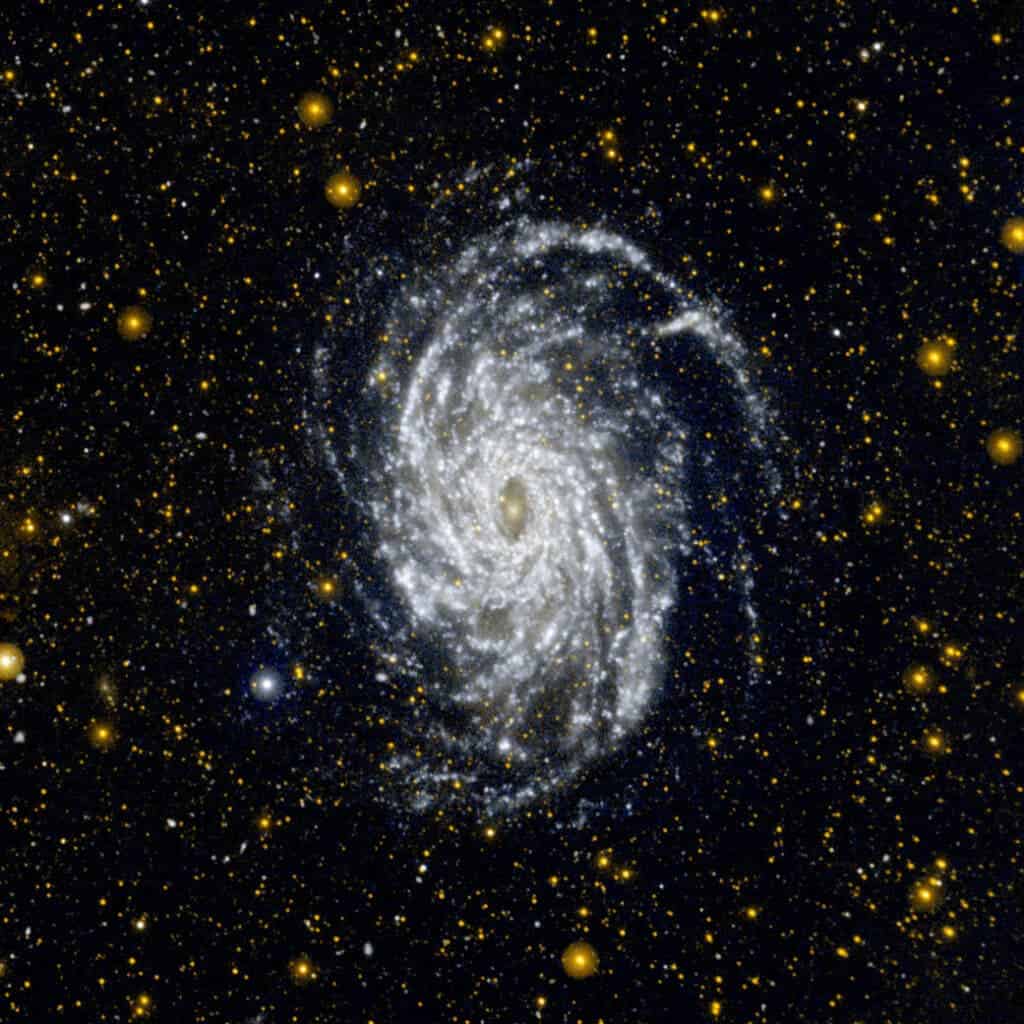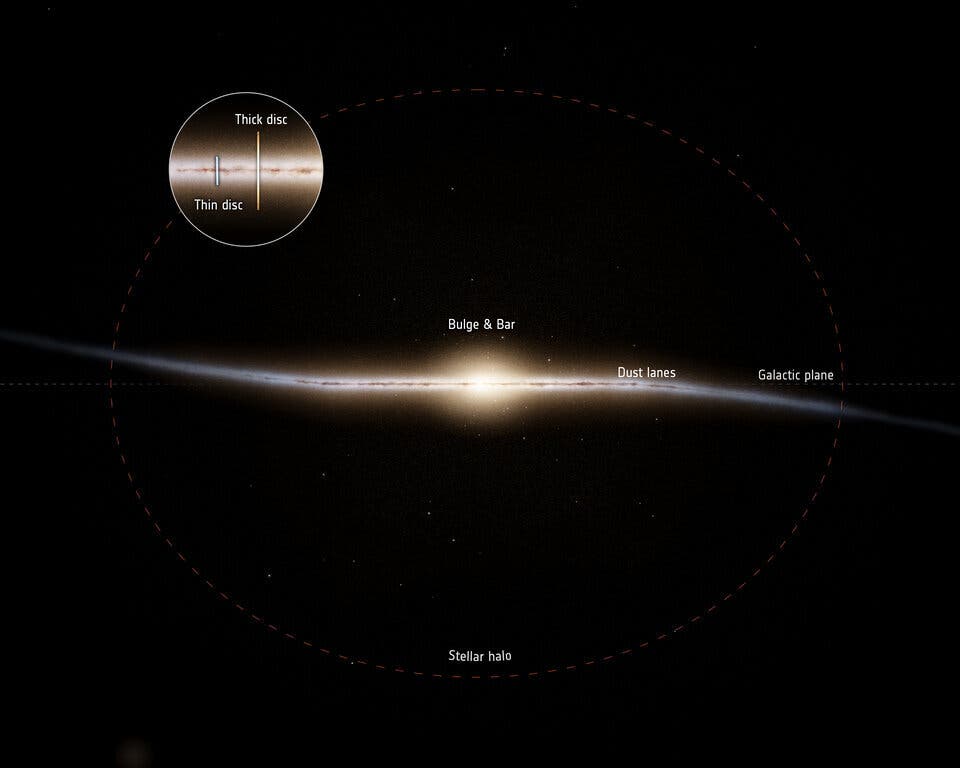
A look up at the sky can reveal just how galaxies unveil themselves over their lifetimes. In fact, stars are a little like fossils which help paleontologists determine the age of dinosaurs. Now, a research pair out of the Max-Planck Institute for Astronomy in Germany has used this method of study to obtain a better idea of how the Milky Way evolved. An analysis of almost a quarter-million stars in our galaxy, of the billions in it, addressed the order in which the parts of our galaxy came together to form its colossal spiral-shaped collection of stars.
Our galaxy is made of different components. Broadly, these can be divided into the halo and the disc. The halo is the spherical region surrounding the disc and has usually been thought to be the oldest component of the galaxy. The disc is composed of two parts: the thin disc and the thick disc. The thin disc encompasses most of the stars that we see as the misty band of light in the night sky that we call the Milky Way. The thick disc is more than double the height of the thin disc but smaller in radius and contains only a small part of the Milky Way’s stars in the solar neighborhood.
Using data from the European Space Agency’s Gaia mission, the astronomers discovered that the thick disc is around two billion years older than previously thought. Their research found it formed approximately 13 billion years ago, just 0.8 billion years after the Big Bang.
The result’s surprising discovery comes from an analysis performed by Maosheng Xiang and Hans-Walter Rix, who took brightness and positional data from Gaia’s Early Data Release 3 dataset and combined it with measurements of the stars’ chemical compositions, as given by data from China’s Large Sky Area Multi-Object Fiber Spectroscopic Telescope (LAMOST).
Xiang and Rix chose to look at sub-giant stars, whose energy has ceased being generated in the star’s core and has shifted into a shell around the core. The star itself transforms into a red giant star and because the sub-giant phase is a relatively brief evolutionary part in a star’s life, it allows the star’s age to be determined with relatively great accuracy.
The Milky Way’s development really kicked into gear when it merged with a dwarf galaxy known as Gaia-Sausage-Enceladus. The resulting union filled the halo with stars and triggered the nascent thick disc to form the majority of its stars. The thin disc of stars that holds the Sun, was formed during the subsequent, second phase of the galaxy’s formation.
Prior to this most recent finding, published in Nature, it was believed that halo stars were older than the thick disc.
“Since the discovery of the ancient merger with Gaia-Sausage-Enceladus, in 2018, astronomers have suspected that the Milky Way was already there before the halo formed, but we didn’t have a clear picture of what that Milky Way looked like,” Maosheng Xiang said. “Our results provide exquisite details about that part of the Milky Way, such as its birthday, its star-formation rate and metal enrichment history. Putting together these discoveries using Gaia data is revolutionizing our picture of when and how our galaxy was formed.”







